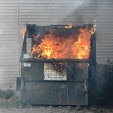This is still a hallmark of enthusiast and pro cameras.
While Nikon and Canon both hoped that the buyer of a Rebel or D40 would get bitten by the photography bug and move up the corporate product ladder, they also knew that a lot of people who grabbed a DSLR kit at a big box retailer did so because they were about to take a honeymoon in Europe or a Caribbean cruise or take the kid on her first trip to Disney World and decided that they needed a Real Grownup Camera™to do so...and very likely that was all it would ever be used for.
If the budding photographer ventured into Aperture Priority or Shutter Priority modes, one dial would still be adequate. It was only when they decided to try Manual mode that it became a hassle.
As an aside, when I first got back into photography, I lamented the loss of aperture rings and shutter speed dials, but having gotten the hang of dual wheels, I recognize their superior utility in being able to adjust settings without having to pull my eye away from the viewfinder. The only downside is that you can't tell at a glance what the camera's settings are...sorta. But that's for the next post.




2 comments:
I had trouble seeing the data line at the bottom of the K20D's optical viewfinder. In anything other than dim or cloudy light it gets completely washed out. On a sunny day I had a hard time seeing any of the information (shutter speed, aperture, ISO) for the settings.
I bought a "Vello" brand rubber (well, some kind of soft material) eyedrop-shaped eyecup for the viewfinder from B&H. It works quite nicely to keep extraneous light from filtering past your head and into the viewfinder, which makes the data display legible for me. I've got one on both my K20D's, and I'm planning to get one for my KF. I don't need it quite so much on the KF since that's hosting my big lens, and I default to a User-mode setting of TAv where the camera floats the ISO to match my preferred shutter speed and aperture as pre-sets. The eyecup makes it difficult to adjust the diopter on the viewfinder, but once you've got that set you don't tend to adjust it much anyway.
Yeah, an eyecup upgrade would make a big difference for "run-and-gun" shooting at the range.
Post a Comment